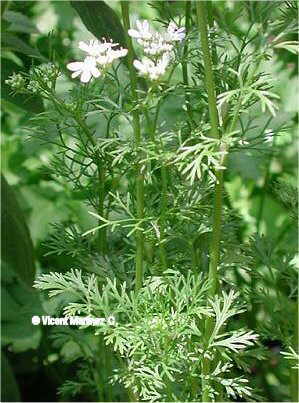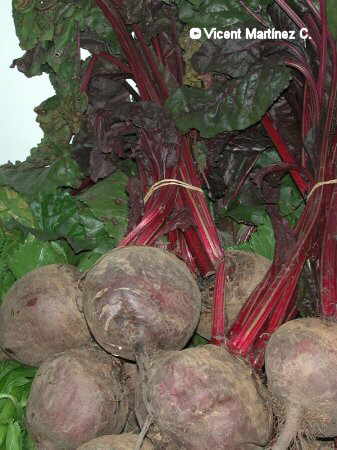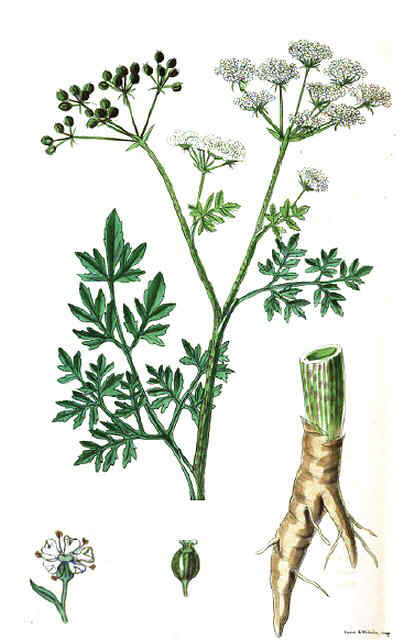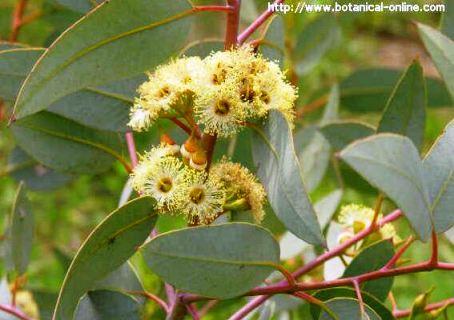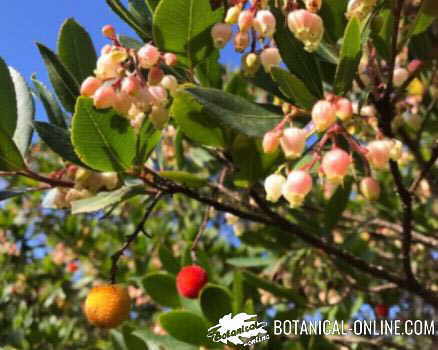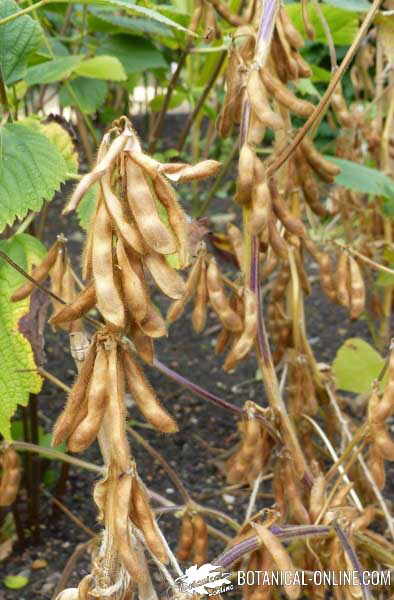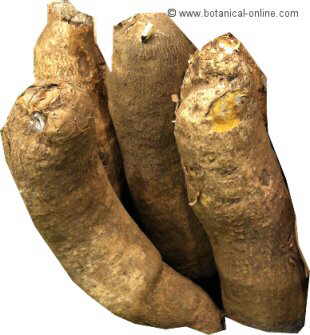Contents
How to grow noni
CHARACTERISTICS OF NONI
Common English name: Noni, Indian mulberry, great morinda.
Scientific name: Morinda citrifolia L.
Taxonomic Synonyms: Morinda bracteata Roxb.; Morinda white litoralis.
Family: Rubiaceae
Botanical description of Noni
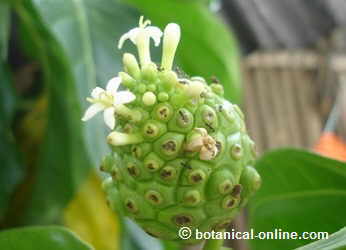
Flowers of noni
Noni is a small tree, green throughout the year which can be between 3 and 6 meters high. Stem erect, slender, gnarled, gray or brown. Sometimes this shrub seeks support in other trees nearby, acting as a vine.
Leaves glabrous, opposite, petiolate, glabrous oblong-round shape, with well-marked nervousness. Stipules paired at the leaf base. Flowers in flower clusters. Perfect flowers with white corolla, tube consisting of between 4 and 6 lobes oblong-toothed.
The fruit is fleshy syncarp type or medium size, ovoid, pale green, elliptical and smelly.
Suitable climate for noni
Wild noni inhabits temperate, tropical and pantropical climates. It is usually found on the coasts of the islands of the Pacific and the Indian Ocean. It’s widespread in Central and South America. Since ancient times, this species was imported from Australia (“New Holland”) and was grown in European gardens because it is a beautiful flowering shrub and bears fruit that remains the whole year.
Noni tolerates adverse weather conditions such as wind, flooding and salinity of coastal land. It can be cultivated from sea level to -500 m, depending on latitude and the environment.
Average annual temperatures (optimal): 18 – 34 ° C. It tolerates summer high temperatures (up to 38 º C) and not to extreme cold of winter (up to 10 º C).
Noni irrigation
It tolerates from 2800 to 4000mm of annual rainfall. Below this precipitation, it is important to provide it a system of irrigation. It can stand flooding.
Noni suitable soil
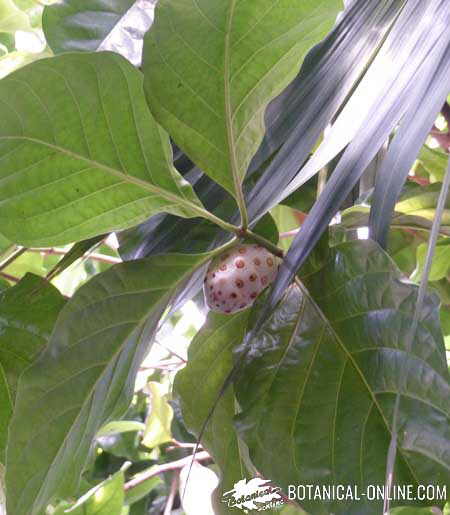
Photo of noni fruit and leaves
Optimal soil conditions:
- Slightly acidic soil pH between 5.5 and 6.8, up to 5 acidity.
- Deep, preferably well drained soil
Noni is a shrub that has been able to spread throughout the islands from the Pacific Ocean to the Indian Ocean. This is because it has floating seeds (with an air chamber that allows them to float), but this extension can be considered as the adaptability of this plant in all terrains.
Noni can be cultivated in a wide range of soils, from acid to alkaline soils, infertile land, drained or not, and may even colonize magmatic areas. It can also grow in areas with periodic flooding.
In fact, it is considered an invasive species in some ecosystems, especially marine (coastal areas and islands). It tolerates salt spray of the ocean and it is also believed that the plant feeds on some sea minerals, it grows in Panamanian Caribbean mangrove areas with high concentrations of sodium (salt).
Noni exposure
In can be planted in partial shade or full sun, although noni can grow in the sun and in the shade. Although full sun is necessary for noni to achieve a complete growth, it also grows in the canopy of large trees like bananas, coconuts, palm leaves, etc.
NONI PROPAGATION
Noni plant can be propagated by seeds or cuttings.
Propagation of noni by seed
Noni seeds have the characteristic that are hydrophobic, a property that allows them to float on water and spread on the sea and coastal areas. In turn, this causes seeds the capability to take longer to germinate, approximately 6 to 12 months or more. This is the main drawback of this type of propagation.
A noni fruit stores multiple seeds inside, because it is a fleshy compound fruit, an infrutescence (union of several fruits during growth, such as pineapple). These seeds must be separated from the pulp, which is edible, and soak in water until it germinates. Germination temperatures should be between 28 and 38 º C. At higher temperature, the lower the germination time, and, as we have said, this may take a year.
One germinated, the seed is suitable for transplantation into fertile soil. From its first year, in its optimal cultivation conditions, the plant already produces flowering throughout the year.
Propagation of noni by cuttings
Cuttings are the most practical way to propagate the plant. A cuttings can root the first or second month of being transplanted. The disadvantage of this type of propagation is that the resulting plants may be less resistant to disease, and there is a risk for the noni trunk and branches to split and break during the first years of fruiting.
Noni fertilization
You do not need to fertilize noni. Fertilization is only recommended in cases of crops for mass production of fruits.
This process will be periodic, adding fertilizer frequently and in small amounts. Fertilizing can be as follows:
- Organic Fertilizer: chicken manure, macadamia nut shells or crushed coral are effective fertilizers for noni. Igneous rocks are also used to stimulate growth. Another option is to cultivate legumes along with noni, which add nitrogen to the soil and protects the plant from water erosion.
- Organic nitrogen is important for the rapid growth of the plant. A deficiency of this mineral is characterized by chlorosis in their leaves, which is distinguished as white spots on the leaves due to loss of pigment. It is an essential mineral in the cultivation of this plant. You do not need to add it immediately since it is present in soil but, from the first or second month, we should introduce this fertilizer.
- Phosphorus is another important component for the growth of this plant. We must introduce it together with nitrogen and potassium.
- Potassium determines the sugar content of the fruit. Add it along with the two previous ones.
- Calcium: For the plant to develop fully is important to provide calcium. We can do this by using bone meal or flour shells of crustaceans. A calcium deficiency promotes plant diseases. It is recommended the proportion of calcium to magnesium to be 4:1.
- Magnesium deficiency is manifested in the yellowing of older leaves of the plant, which undermines fruiting. Natural magnesium fertilizers are dolomite sand or conventional magnesium sulfate. It does not generally require large doses of this type of fertilizer, so we can contribute it in small quantities but regularly.
![]() More information on noni.
More information on noni.

